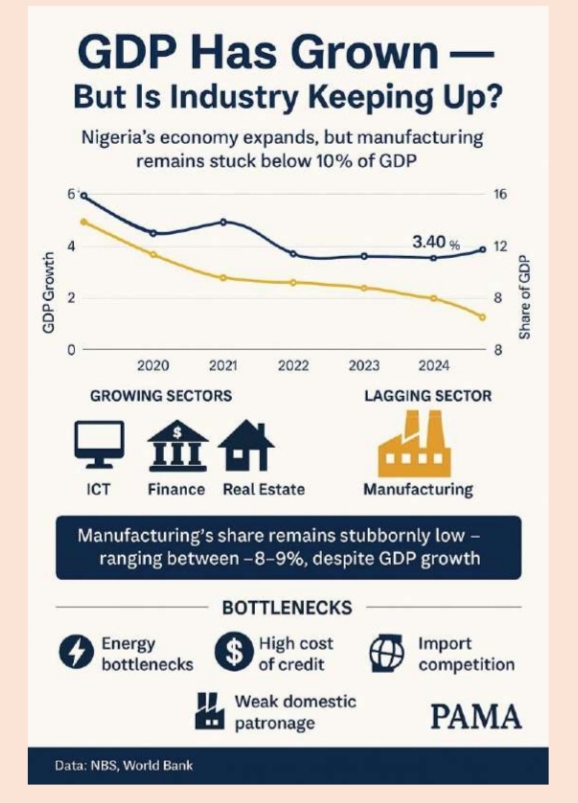Co-Secretary General of PAMA, Segun Ajayi-Kadir, cautioned that the GDP rebasing exercise should not be treated as an occasion for self-congratulation
The 2025 rebasing of Nigeria’s GDP has recalibrated the size and structure of the Nigerian economy, placing it among Africa’s largest once again.
But beneath the glossy numbers lies a more sobering truth: manufacturing remains marginal, growth is still consumption-driven, and industrial productivity is lagging.
For the Pan-African Manufacturers Association (PAMA), this is not a moment for celebration, but for bold course correction.
If Nigeria’s economic statistics are to mean anything to its citizens, they must be underpinned by real sector growth, factory activity, and decent industrial jobs.GDP Rebasing:
What It Reveals About Nigeria’s Manufacturing
Despite the statistical increase in Nigeria’s GDP levels, the share of manufacturing remains unacceptably low, even as the sector continues to bear the burden of multiple structural bottlenecks: poor energy supply, weak domestic patronage, import dependency, inadequate finance, and inconsistent policy implementation.
The estimated GDP figures are high but do not reflect Nigeria’s industrial potential.
While acknowledging the National Bureau of Statistics (NBS) for its commendable effort in broadening sectoral inclusion, the Co-Secretary General of PAMA, Segun Ajayi-Kadir, cautioned that the GDP rebasing exercise should not be treated as an occasion for self-congratulation.
Rather, it must serve as a policy wake-up call for strategic industrial transformation in Nigeria.
If GDP is growing without a corresponding expansion in manufacturing capacity and industrial jobs, the sustainability and inclusivity of such growth must be questioned.
Source: July 2025 PAMA News Bulletin

